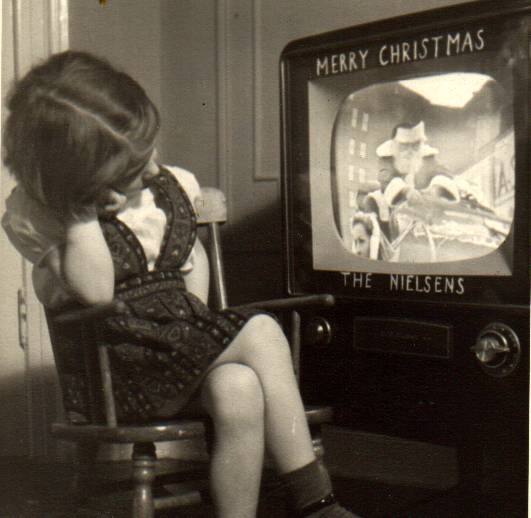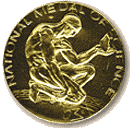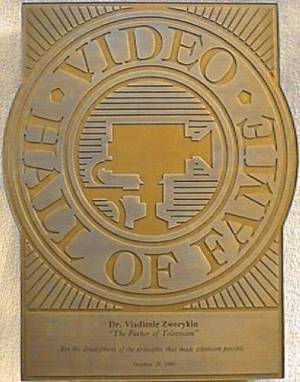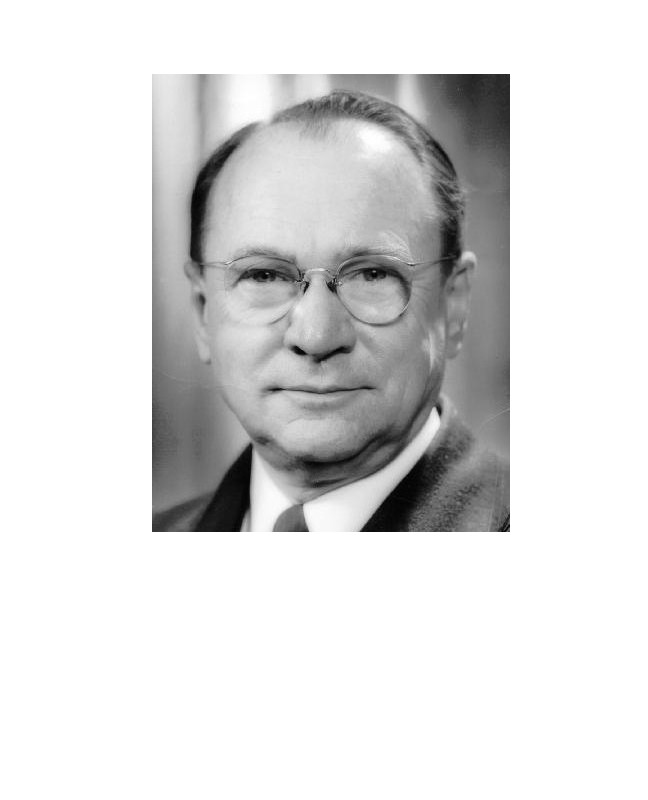 |
HISTORY TV. NET.....The Earliest Photographs from New York City, Where Electronic Television Broadcasting Began!
These albums came from the estate of Dr. Zworykin himself contain the first screen images of Baseball, Football and Mickey Mouse. There is also a screen image of an eclipse in 1934.
Please scroll down to the pages to view these unique images starting on page 1 below.
|

Television went beyond newspapers and even radio as it
brought the world into our homes. Following the September 11th attack more than 2.3 million televisions were sold in that month.
There is not a more impactful invention than that of television. It extends our vision throughout our world and even our universe. Soon we will see images from Mars!
NBC and RCA began transmitting from what is now the tallest building in New York, the Empire State Building. This building now highlights the city skyline in a patriotic display of red, white and blue lights.
Please take some time and view the earliest photographs known to exist on early television!
Now see television history, view the earliest known collection of photographs....The Personal Photographs of Experimental Television by Inventor Dr. Vladimir Kosma Zworykin and More!
Scroll down to page 1 to view them, or go back to the MAIN PAGE.
Be sure to book mark this site as an historical photographic resource on the top secret experimental days of television!
The Restelli Collection
http://historytv.net

Click below to go to
|
Felix The Cat Broadcast of 1929 |
Dr. Zworykin's Secret Experimental RCA Photos of 1933 |
First TV Dinner June 21, 1936 |
First Live TV Demo November 6, 1936 |
Public Sees TV at 1939 World's Fair |
Photo Card of Dr. Zworykin 1948 Topps |
Dr. Zworykin weds November 14, 1951 |
Dr. Zworykin dies July 29, 1982 |
eMail: Steve Restelli |
Sign:Guestbook |
Links |
The Restelli Collection has been visited  times, check back for future additions. Last update; 3-27-15
times, check back for future additions. Last update; 3-27-15
The Early History of Television Through Visual Images!
Copyright 2015. All Rights Reserved Steve Restelli. Box 21,
Calais, VT., 05648, USA. All Rights Reserved

Dr. Zworykin, Recipient of THE NATIONAL MEDAL OF SCIENCE 1966
For major contributions to the instruments of science, engineering and television, and for his stimulation of the application of engineering to
medicine.

The last known award given Dr. Zworykin October 28, 1981. Click Here to view a list of other awards.
 This page is dedicated to the memory of Dr. Vladimir Kosma
Zworykin (1889 -1982). Dr. Zworykin received our nations highest scientific honor, The National Medal of Science in 1966 from President Lyndon B. Johnson.
This page is dedicated to the memory of Dr. Vladimir Kosma
Zworykin (1889 -1982). Dr. Zworykin received our nations highest scientific honor, The National Medal of Science in 1966 from President Lyndon B. Johnson.
He received approximately 120 U.S. patents and was elected to the National Inventors Hall of Fame in 1977
His research made viewing your
favorite sporting event or television show possible. He also was instrumental in developing the electron microscope, and was chosen by A&E Television as number 67 of the "100 Most Influential People of the Past 1,000 Years".
These photographs
were his personal record of the experimental days of television at RCA. Most of these were never published, only a few examples were published by RCA Technical Press in 1936-37 in their "Television" booklets, Volumes 1 and 2.
By the time WWII came even these low quality half tone images plates were destroyed and recycled into war materials.
This collection, having been privately held by Dr. Zworykin, is of outstanding quality and shows such detail that even the lines in the screen (kinescope tube) can be counted.
These screen image photographs below are the only ones known to exist, and were taken from the kinescope receiving tube. The descriptions and dates were hand written by Dr. Zworykin. So enjoy this opportunity and click on the pages below to see the original photographs the world has never seen before! The receiving tube (kinescope)was the single most important technical advancement in electronic television.
I am always adding to the collection. If you have a related NBC, RCA, Zworykin photograph, article, paper, book, letter or any item to sell please contact me. If you have information about these photographs please eMail me
The Restelli Collection has been visited  times, check back for future
updates
times, check back for future
updates

The Personal Photographs of Dr. Vladimir Kosma Zworykin, Television
Pioneer
© Copyright 2015 Steve Restelli. Box 21,
Calais, VT., 05648, USA. All Rights Reserved
THE RCA and NBC EXPERIMENTAL TELEVISION PROJECTS
During the first half of 1932, an experimental television system had been used in New York using a studio scanning apparatus. This consisted of a mechanical disk, flying-spot type, for an image of 120 lines. Even for small areas of coverage and for 120 lines, the resulting signal amplitude was unsatisfactory.
In the Camden system, an iconoscope was used as the pick-up device. The use of the iconoscope permitted transmission of greater detail, outdoor pick-up, and wider areas of coverage in the studio. Experience indicated that it provided a new degree of flexibility in pick-up performance, thereby removing one of the most technical obstacles to television. 1
After many years of research and development an all-electronic television system emerged from the laboratory in 1933 for actual field tests. These tests were carried out at Camden (New Jersey), using a video transmitter and connected to it by a coaxial line. Iconoscopes (television cameras) were used to pick up scenes both in the studio and out-of-doors. A scanning pattern of 240 lines made it possible to obtain a picture with good definition, but as the frame frequency was 24 cycles, without interlacing , flicker was quite noticeable.
The following year (1934) the number of lines was increased to 343, and an interlaced pattern having a field frequency of 60 cycles and a repetition rate of 30 frames per second was adopted. The results of these tests were so satisfactory that it was decided to continue them in New York City, the site of earlier RCA tests using a mechanical scanner. The advantage of the new location was that transmission studies under more nearly the conditions encountered in actual broadcasts were possible, in particular, with respect to noise and reflection from buildings. This move was made in 1935, tests followed the following year. The New York studios were located in Radio City. The transmitter was installed in one of the upper floors of the Empire State Building, with the antenna on the mooring mast, 1285 feet above street level. Two links interconnect the studio and transmitter. One of these is an underground coaxial cable approximately a mile in length. An ultra-high-frequency radio relay link operating at 177 megacycles serves as (an) alternative for interconnecting the two units. In order to increase the flexibility of the system, and to permit outdoor and indoor pickup from remote points, a mobile unit consisting of a pickup truck and transmitter, which operated at 177 megacycles, was placed in service in 1938. Approximately one hundred receivers were built and located at various points within a radius of 50 miles of the transmitter. These, together with field strength measurements, gave detailed information as to the effect of the terrain on the received pictures. They also facilitated obtaining data on the reaction of a great variety of people to different types of programs. 2
1. E.W. Engstrom, "Television"; "An Experimental Television System"
RCA Institutes Technical Press, pp. 253-254, July, 1936.
2. V.K. Zworykin, G.A. Morton, "Television, The Electronics of Image Transmission," John Wiley & Sons, Inc., pp. 567-568, 1940
The screen images below are time exposure photographs of the picture on the kinescope in the monitoring rack in the main control room. Some were taken with stationary frames of moving picture film projected upon the iconoscope by a standard moving picture machine. Others are actually the pictures transmitted with the iconoscope camera in the studio and outdoors.
I would like to thank Les Flory for his help in the identification of many of these photographs. Without his help, many of the names here would not have been known!
Click on the hypertext to the right of the page numbers to view these early images.
Page#
- Click here to see
1933 Earliest Screen Images of Dr. V. K. Zworykin
- Click here to see
1933 Screen Image of RCA Test Pattern
- Click here to see
1933 Screen Image at the Zoo
- Click here to see
1933 Screen Image of a Movie
- Click here to see
1933 Earliest Television Screen Images of Baseball and Football. Only the baseball photograph was published in "Proceedings of the Institute of Radio Engineers", December 1933, page 1642.
It shows the Boston Braves Field which Opened; August 18, 1915.
Location: About three miles west of downtown Boston and one mile west of Fenway Park. First base (S), Commonwealth Avenue; right field (E), Harry Agganis Way (Gaffney Street); left field (N), Boston and Albany Railroad tracks/Charles River; third base (W), Babcock Street.
The Football Image was never published and was previously not known to exist.
- Click here to see
1933 Large Screen Image of a Piano Player
- Click here to see
1933 Top; Elmer "Shorty" Engstrom, Head of
RCA Research (later President of RCA). Bottom; Photograph of a Woman that was published in "Proceedings of the Institute of Radio Engineers", December 1933, page 1642.
- Click here to see
1933 Close-up Screen Image of a Movie
- Click here to see
1933 Earliest Known Mickey Mouse on TV. This photograph was published in "Proceedings of the Institute of Radio Engineers", December 1933, page 1642.
- Click here to see
1933 Large Screen Image of Merrill Trainer at the RCA Camden facility.
- Click here to see
1933 Left;Outdoor Screen Image of an Antenna--- Right; Ben Franklin crossing the Delaware River. The view located next to the old RCA site looking from Camden N.J. to Philadelphia Pa.
- Click here to see
1933 Large Screen Image of Unidentified Man.
- Click here to see
1933 Top; Both of these images look to be from the inside pick-up mica plate of the Iconoscope Camera Tube. Bottom; Profile Screen Image of Dr. Zworykin.
- Click here to see
1933 Early Screen Image of a Ship
- Click here to see
1932 Top; Iconoscope Captures a Solar Eclipse. Left; An Image of this Eclipse. Right Top; Gregory N. Ogloblinsky (left), Richard Campbell (center), and Dr. Zworykin on the roof of the RCA victor plant in Camden prepare for a solar eclipse, August, 1932. Botton; Adjusting the Lens During the Eclipse (visable in background). Les Flory was present taking the photographs.
- Click here to see
1937 Top; Standing is Dr. Elmer Engstrom
- Click here to see
1937 Top; An Early Main Television Signal Room Control and Switching Panel, Lesley E. Flory at left, Charles Banca to his right. Studio and Motion Picture Image Selection as well as Audio are made and forwarded to the Radio Transmitter. Note Image on the Screen. Bottom ; Arthur W. Vance, an expert in electric circuitry, pictured to the right.
- Click here to see
1937 Top; Charles J. Young, son of Owen D. Young, first Chairman of RCA. Bottom; Probably Elmer Engstrom.
- Click here to see
1936 Top; Listening to the Sound Transmission of Television. Bottom; Art Vance.
- Click here to see
1937 Top; Bob Goodrich on left inspects a Y-Shaped Image Intensifier Tube connected to a vacuum pump system and baking oven. Insuring that there are no leaks it is then throughly outgassed by baking the tube. The metal in the tube is also heated at a high temperature with a high frequency bombarder.
- Click here to see
1937 Left; Earnest Massa (brother of the better known Frank Massa). Right; Dr. George Morton. Bottom; Mary Hemphill, Secretary.
- Click here to see
1934 Close-up Screen image of a Piano Player.
- Click here to see
1934 Close-up Screen image of a Piano Player.
- Click here to see
1934 Screen Image of a Cartoon
- Click here to see
1934 Screen Image of a Piano Player
- Click here to see
1934 Earliest Known Unpublished Baseball Television Screen Image
- Click here to see
1934 David Sarnoff makes his TV debut
- Click here to see
1934 Top; Dr. Zworykin at his desk at Camden, N.J. Bottom; Gregory N. Ogloblinsky, Russian by birth, was formerly Edouard Belin's chief engineer in Paris, France in the late 1920's.
- Click here to see
1934 Top; Dr. Zworykin at his desk Bottom; Gregory N. Ogloblinsky, physicist and engineer, at his desk, RCA in Camden, N.J. "Oglo" was instrumental in the development of the Iconoscope (Camera) Tube. He was killed in a high-speed automobile crash while vacationing in France, in 1934.
- Click here to see
1934 Left; Gregory N. Ogloblinsky at work. Right; Dr. Zworykin Reading at his desk at RCA in Camden, N.J.
- Click here to see
1934 Top; Gregory N. Ogloblinsky at work on one of the handmade components for experimental television at RCA in Camden, N.J.
- Click here to see
1934 Dr. Zworykin being broadcast by his Iconoscope
- Click here to see
1934 H. W. Laverenz, Chemist.
- Click here to see
1934 The First Iconoscope Television Camera in the Studio aimed at Lesley E. Florey.
- Click here to see
1934 Top; Dick Campbell. Bottom; Bill Painter.
- Click here to see
1934 Bottom; Harley Iams inspecting an Early Iconoscope Tube
- Click here to see
1934 Making tubes for television. Top; Karl Kesselring, glassblower. Bottom; Karl Schuman, glassblower.
- Click here to see
1934 Time to relax after success is achieved and then a time for celebration
- Click here to see
1934 A Celebration of the Refinement of a New Era of
Communications
- Click here to see
1934 Top; Chemicals being stored for their use in experimental television. Bottom; Unknown experimental television equipment.
- Click here to see
1934 Top; Raymond Davis Kell, who formerly worked with Dr. E. F. W. Alexanderson at General Electric, is shown scanning film for television with a "Nipkow" type scanning disk and a Powers Cameragraph (model 6B or 6A) with a modified motor drive. This projector would have been considered to be an antique even in the 30's. The film used with this projector would have been made of nitrocelulose and quite flamable; it is interesting that the room in which it is being used does not appear to be a regulation fireproof projection booth as required by law. A second lens was placed behind the film to focus on the photo electric pickup tube for satisfactory results. The light source shown is from a Edison-Mazda lamp, gas filled and quite bright. Bottom; The First Iconoscope Camera Transmitting a Test Pattern (see page 2 above to view the actual screen image).
- Click here to see
1934 Dr. Zworykin at his desk at RCA
- Click here to see
1934 Gregory N. Ogloblinsky working on a project.
- Click here to see
1934 H. W. Laverenz, Chemist.
- Click here to see
1934 Harley Iams, at his desk.
- Click here to see
1934; Unknown assistant, is spot welding the metal components that
go inside a vacuum tube. This spot welder is known as an "impulse welder".
- Yet Unknown Image Please help
- Yet Unknown Image Please help
- Click here to see
1934 Top; Arthur Vance. Bottom; Unknown assistant works on television project at RCA in Camden, N.J.
- Click here to see
1932, August, Dr. Zworykin (at right) and Unknown Assistants Ready the Iconoscope with Lens and Mirror to Capture a Solar Eclipse
- Click here to see
1934 Right; Kinescope (TV Picture) Tubes of Various Sizes on Display
- Click here to see
1935 Dr. Zworykin lectures to a group in Berlin, Germany, probably at Technische Hochschule in Charlottenburg.
- Click here to see
1935 Dr. Zworykin in Berlin, Germany, probably at Technische Hochschule in Charlottenburg, where he had enrolled as a student 22 years earlier.
- Click here to see
November, 1940; A Gathering at Rodman Smith's Farm. According to Les Flory, "Rodman Smith was a friend of Dr. Zworykin, not associated with him in his work. I believe they were members of a flying club."
- Click here to see
November, 1940; A Gathering at Rodman Smith's Farm
- Click here to see
November, 1940; A Gathering at Rodman Smith's Farm
- Click here to see
1940 Camden, N.J., Top; Dr. Edward G. Ramberg, physicist: his papers have been deposited at the American Philosophical Society in Philadelphia. With him is Dr. James Hillier (b.1915), his work on the electron microscope began at the University of Toronto. He and a fellow graduate student built a working model in 1937 that magnified 7,000 times. Modern Electron Microscopes can magnify up 2 million times. Dr. Hillier was a research engineer at RCA Laboratories from 1940 to 1953, at which time he joined Melpar Inc. as research director. He returned to RCA in 1954, where he became the general manager (1957) of laboratories in Princeton, New Jersey. He retired in 1978, as Executive Vice President and Senior Scientist of RCA Labratories. Dr. Hillier holds 40 patents. Bottom; Dr. George Morton, co-authored several books with Dr. Zworykin.
- Click here to see
1940 Top Left; Dr. Ladislas Marton, recruited by Dr. Zworykin in 1938 from Belgium to help develop the electron microscope. Dr. Marton had constructed a primitive version that he used for his research in 1934. Also pictured is Golzaff, in front of the Marton Electron Microscope. Dr. Marton's electron microscope was the only one available, until the James Hillier model became available in the spring of 1941. Top Right; Earnest Massa, an expert on Electro-acoustics who started working at Victor Talking Machine Co in the late 1920's and Robert R. Goodrich view the top of the first Commercial RCA Television Receiver (TRK-12). Bottom; J.F. Bender, Electron Microscope research engineer. (all of RCA)
- Click here to see
1940 Top; Browder J. Thompson (1903-1944), Zworykin's co-director of RCA Laboratories when they opened in Princeton in 1942. Thompson died in Italy, July 4-5, 1944 while evaluating working conditions for radar when the Germans shot down the plane he was in. In Dr. Zworykin's office at RCA the walls did not display any of his some 50 awards, they were bare, except for one thing--this small photograph of B.J. Thompson. Miss Gale is at Top Right. Bottom; Dr. P.T.
Smith (at Harrison Facility)
- Click here to see
1940 Top; Dr. R. Nelson, Bottom; L. Garner at
Harrison, N.J. RCA Facility. Harrison was formerly a Westinghouse tube plant acquired by RCA for the purpose of making research tubes, like the iconoscope ready for manufacture.
- Click here to see
1940 Top; H. Floss, Bottom; Harley Iams ,at Harrison, N.J. RCA Facility. Started out as a student engineer at Westinghouse to work on phototelegraphy (facsilile machines). He later became Co-director at HRL Labs"
- Click here to see
1943 Camden, N.J.; Dr. V.K. Zworykin (seated left, co-inventor), Dr. James Hillier,(seated right, co-inventor) and Perry C. Smith (standing, RCA Victor Design Engineer)display Electron Microscope, in console desk size which is capeable of magnifying up to 100,000 times.
View the First TV Dinner--June, 29, 1936. It was HUGE!"
RCA's
Official Press Release July 30, 1982 "Dr. Vladimir K. Zworykin, RCA
Television Pioneer, Dies"
1948 Topps Gum Magic Photo Card of Dr. Zworykin"
View 2 examples of Dr. Zworykin's Autographs"
Zworykin's Biography
| Links Page | 1951 Zworykin Album | eMail: Steve Restelli
Steve's Historical Find; Newly Discovered Underground Railroad site in Lebanon, NH
Go to the TOP OF THIS PAGE






